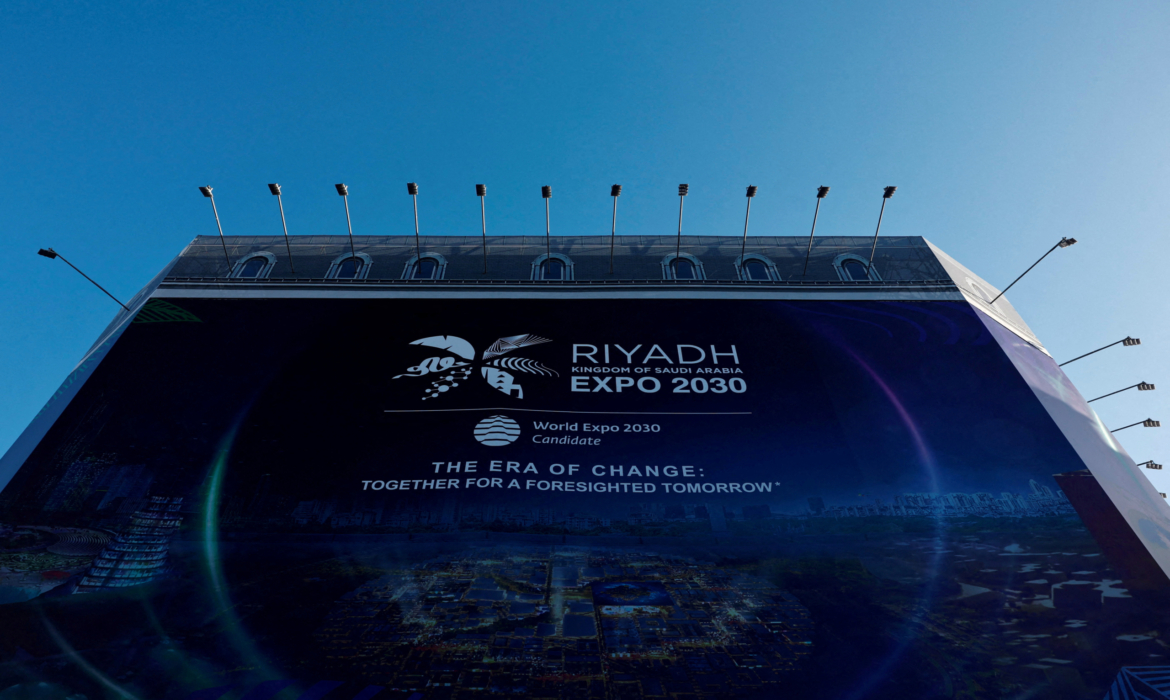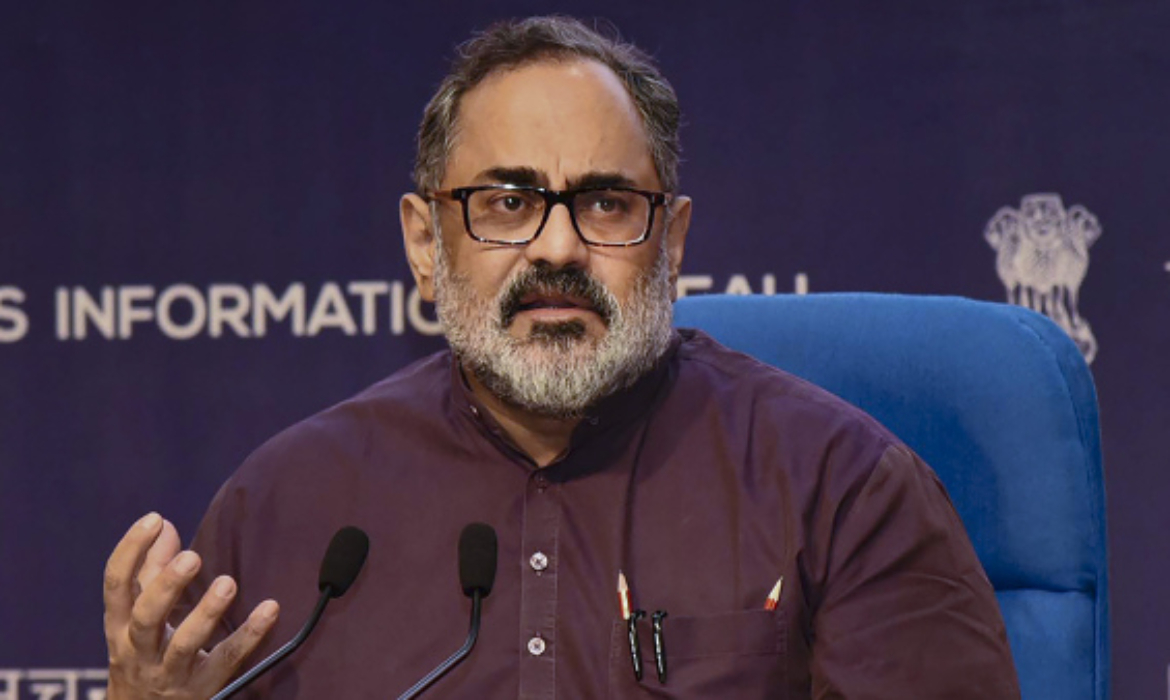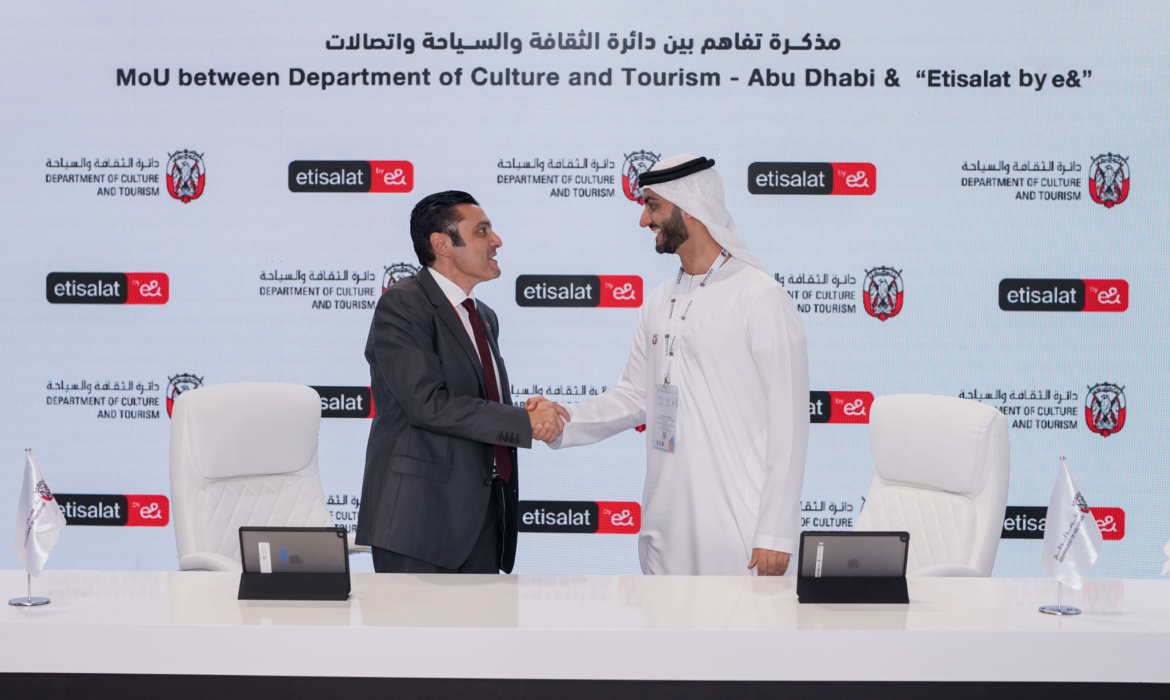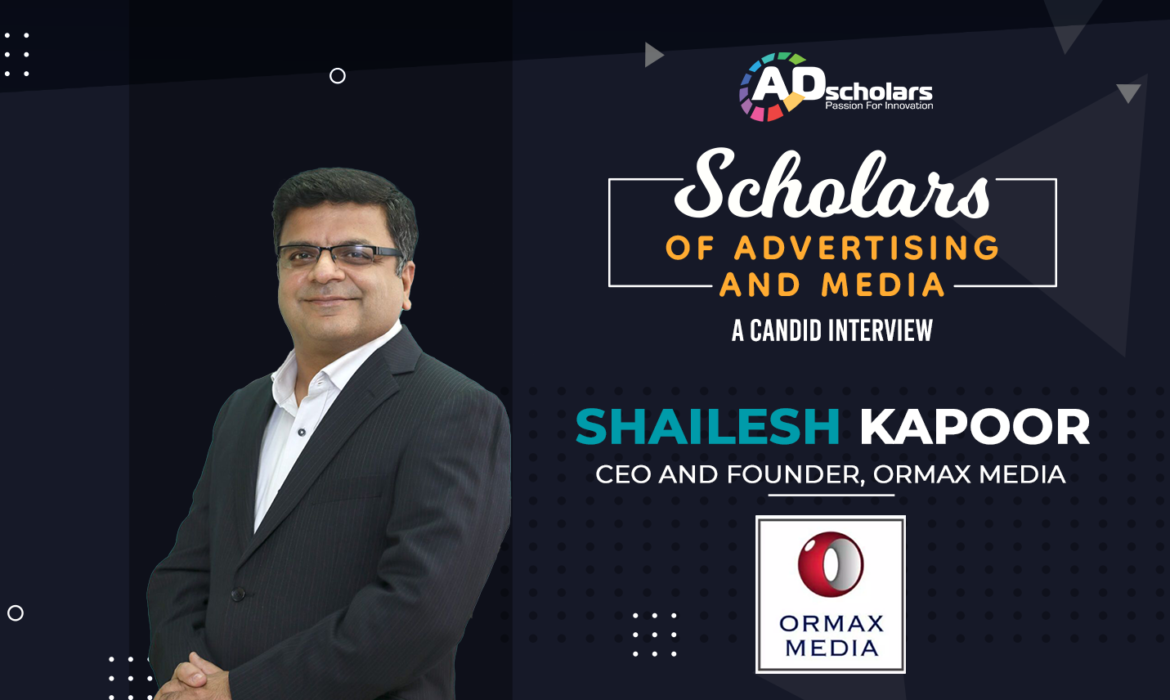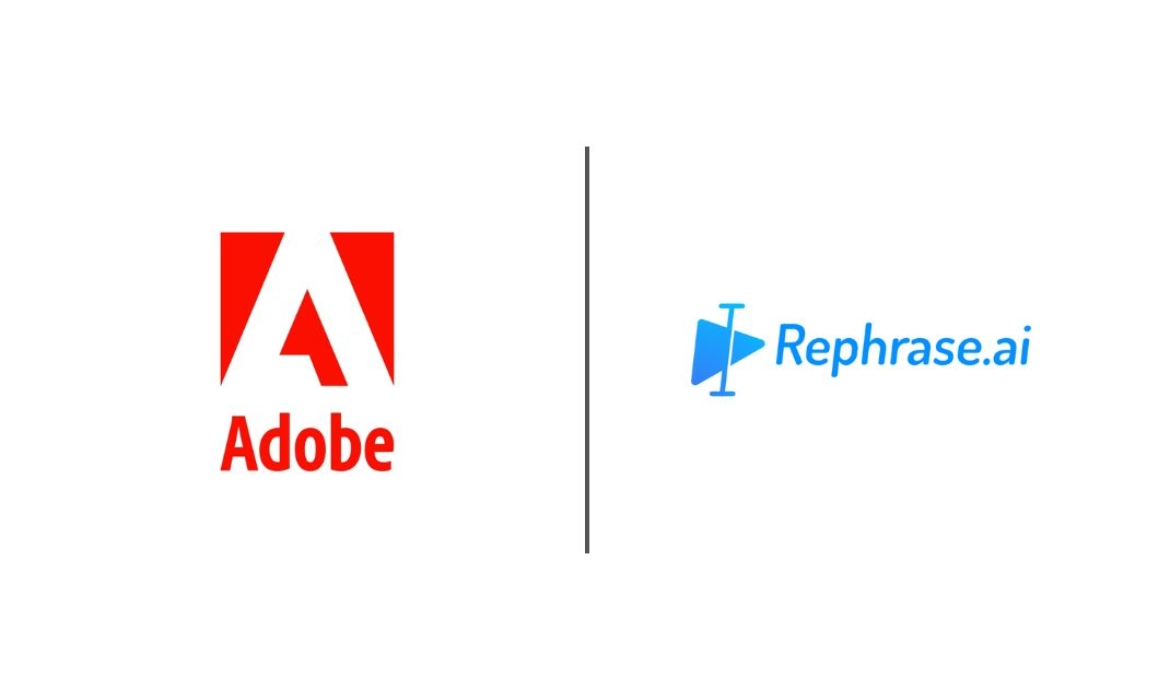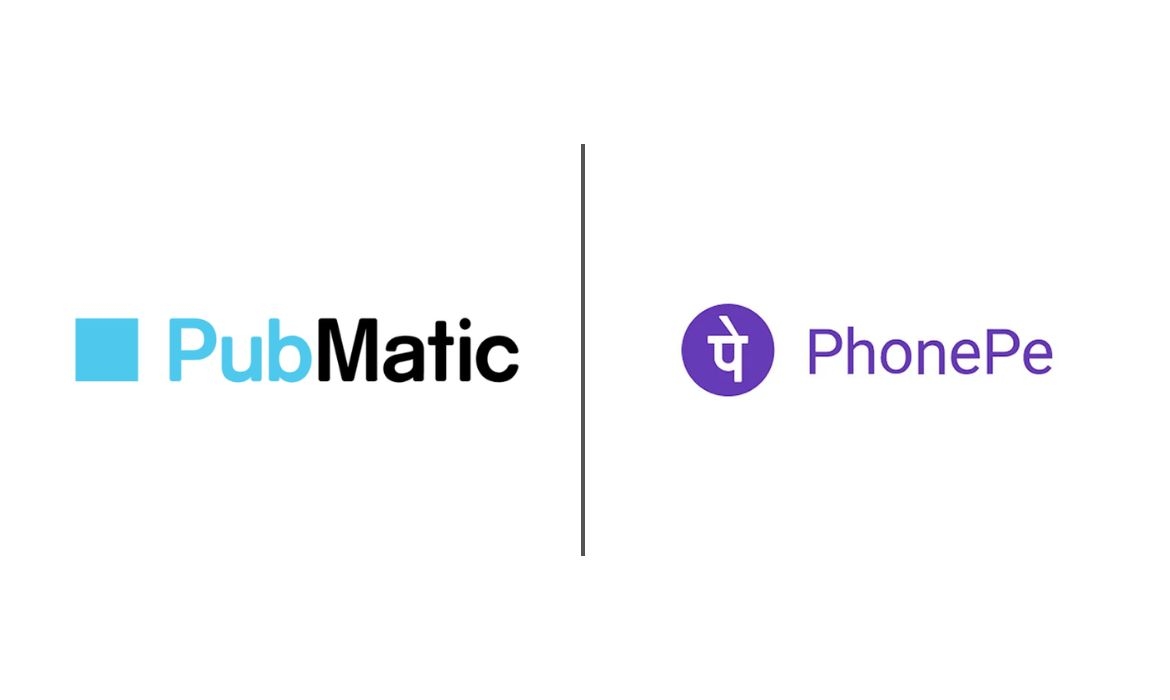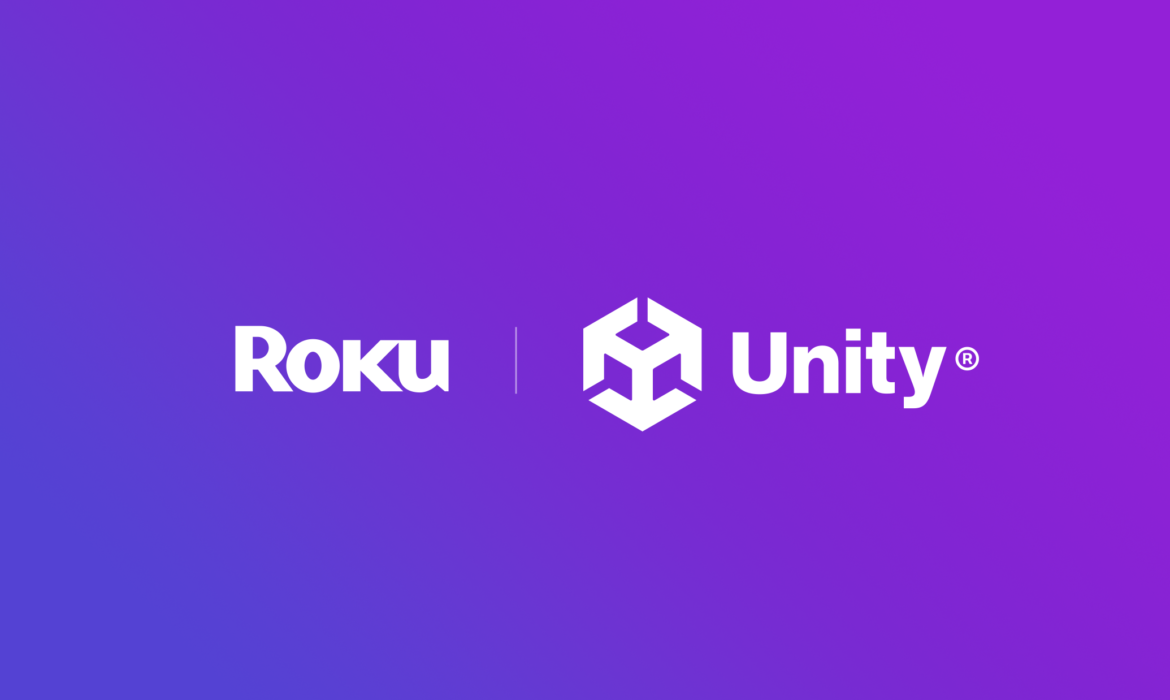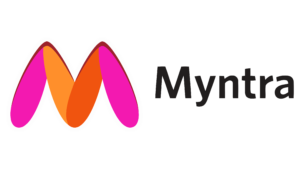Saudi Arabia Capital Riyadh Set to Host World Expo 2030 Fair
In a major victory for Crown Prince Mohammed bin Salman, the de facto ruler of the Kingdom, the capital of Saudi Arabia, Riyadh, will host World Expo 2030 working to change the authoritarian nation’s reputation abroad. Following the World Cup of Soccer in Qatar last year, the vote results indicated that a Gulf nation had achieved yet another diplomatic win. Rome, Italy, and Busan, South Korea’s port city, were also considered to host the event. It takes place every five years and brings in billions of dollars in investment and millions of visitors.
World Expo 2030 Ballot
Through electronic voting, a secret ballot was cast, and Riyadh was officially confirmed as Osaka’s 2025 successor host. Results from 182 members of the Paris-based Bureau International des Expositions (BIE) showed that Riyadh won 119, Busan 29, and Rome 17. For Saudi Arabia to prevail in the first round, two-thirds of the votes were required. It was the first time a candidate had won in the first round of voting, with two-thirds of the votes in twenty years. The victory is the cherry on top of Crown Prince Mohammed bin Salman’s massive Vision 2030 initiative, which tries to wean the nation off its reliance on oil.
Dubai congratulates Saudi on their successful bid
His Highness Sheikh Mohamed Zayed Al Nahyan, the President of the United Arab Emirates, congratulated the Saudi Arabian government and people on this momentous occasion. It is anticipated that the occasion will symbolize the realization of Vision 2030. Furthermore, it will highlight the Kingdom’s accomplishments, with a special emphasis on hospitality, tourism, and culture.
I extend my sincere congratulations to King Salman bin Abdulaziz, Crown Prince Mohammed bin Salman, and the people of Saudi Arabia for the Kingdom's successful bid to host Expo 2030. Through resounding support for Riyadh Expo 2030, the international community continues to…
— محمد بن زايد (@MohamedBinZayed) November 28, 2023
Read More: Gamers8 2023: Riyadh’s Premier Esports Event Powered By Generative AI
Previous World Expo Fairs
The theme of the previous Expo 2020 was “Connecting Minds, Creating the Future.” It was hosted in the dazzling Persian Gulf emirate of Dubai. For the first time in the Expo’s more than 170-year history, it brought together 192 nations. This made it a global success and a testament to the country’s achievements. For the first time in its history, the fair was held in an Arab country. Over 24 million people attended. Expo 2020 is currently known as Expo City Dubai.
Examples of Innovative Inventions at the World Expo
Winning the vote in the French capital, where the Eiffel Tower was constructed for the exposition in 1889, offers nations the chance to draw attention from around the world, millions of visitors, money, and prestige, as well as develop infrastructure and jobs. Since its founding in 1851, Expo has been used as a venue for the introduction of innovative inventions. The light bulb and the Ferris wheel are a few examples of these. Furthermore, the Eiffel Tower itself—which was built for the 1889 Exposition Universelle is also included in these.
Here’s what they said
Saudi Foreign Minister Prince Faisal bin Farhan said
I would like to thank the 130 countries that have already announced their support for the Kingdom’s bid. Distinguished dignitaries, you have all acted as indispensable partners providing insight, feedback, and support throughout the Kingdom’s campaign. We had a fantastic team of ministers going around the world, engaging our counterparts in a very, very active way to understand what they expected, what they were looking for, and what we should deliver in order to gain their trust.
Read More: Saudi Arabia-UAE Join Global NVIDIA Chip Race Amid AI Scramble
Meity Gives Social Media Companies 7-days to Modify User Agreements Against Deepfakes
Rajeev Chandrasekhar, India’s Union Minister of Electronics and Information Technology (MeitY), stated that if users are offended by obscene material such as deepfakes, the government will help them file a formal complaint against social media companies for breaking IT regulations. To discuss this matter, a meeting was called with a few of the most important digital platforms or intermediaries in India. The Union Minister added that social media companies have seven days to update their terms of service in accordance with IT regulations. In addition, he stated that the Center would shortly appoint an officer to combat the threat.
#WATCH | On Deep fake issue, MoS Electronics & Technology Rajeev Chandrasekhar says, "The Rule Seven officer will also be a person who will create a platform where it will be very easy for citizens to bring to the attention of the Government of India their notices or allegations… pic.twitter.com/AHiATR6DD4
— ANI (@ANI) November 24, 2023
Cracking the whip on deepfakes
In an effort to crack down on deepfakes, the union government has given social media companies seven days to modify their user agreements. This is so they comply with IT regulations. The amended account policy prohibits users from participating in 11 categories of content. These include deepfakes, that cause harm to other users. Meity is going to create a platform where people can report social media platforms that are breaking IT rules. Additionally, Chandrasekhar stated that going ahead, 100% of IT rule violations will result in government action.
Read More: Adobe Acquires Indian AI-Powered Platform Rephrase.ai
Meity extends its assistance to file a formal complaint
Meity will assist in filing a formal complaint against harmful content. A case will be brought against the person who posted the content if they assist in identifying its source. The Minister announced that India will create new regulations to identify and stop the spread of deepfakes following meetings with officials from major social media companies and other interested parties. Additionally, the new rule will make it easier for individuals to report these kinds of deepfake videos.
Rules concerning deepfakes
Deepfakes and other unsettling content ought to be taken down within 36 hours of being reported. Intermediaries are required by law to stop the spread of false information. Producing and disseminating deepfakes carries a fine of INR one lakh and a three-year jail sentence.
Here’s what they said
Union Minister of Electronics and Information Technology, Rajeev Chandrasekhar said,
It is a legal obligation for online platforms to prevent the spread of misinformation by any user under the Information Technology (IT) rules, 2021. They are further mandated to remove such content within 36 hours upon receiving a report from either a user or government authority. Failure to comply with this requirement invokes Rule 7, which empowers aggrieved individuals to take platforms to court under the provisions of the Indian Penal Code (IPC). It is imperative that platforms take proactive measures to combat this threat. For those who find themselves impacted by deepfakes, I strongly encourage you to file First Information Reports (FIRs) at your nearest police station and avail the remedies provided under the Information Technology (IT) rules, 2021.
Read More: India Launches IWBDC In a Drive For “Aatmanirbhar Bharat”
Etisalat and DCT- Abu Dhabi Partner to Revolutionize Gaming in MENA
Telecom operator Etisalat by e&, based in the United Arab Emirates, and the Department of Culture and Tourism-Abu Dhabi, have announced a ground-breaking collaboration. By establishing “Arena Esports,” the partnership hopes to transform the Esports scene in the Middle East and North Africa. It is a comprehensive digital gaming platform that will serve as the backbone of the regional gaming industry.
A strategic partnership to propel the gaming ecosystem.
The goal of Arena Esports is to accelerate the evolution of Esports. It embodies the common goals of Etisalat by e& and DCT-Abu Dhabi to lead the MENA region’s Esports league, develop up-and-coming gamers, and raise regional events to the level of global gaming events. Through this new partnership, both organizations’ distinct strengths will be utilized to build a long-lasting and cutting-edge Esports environment. Over the next five years, the project intends to create and manage an Arena Esports league and related competitions, with an emphasis on the United Arab Emirates.
A comprehensive gaming experience
360-degree gaming has been claimed by Arena Esports. It will offer a wide variety of opportunities to players of all skill levels. These will include players from newbies to seasoned pros. It will offer the opportunity to participate in competitive tournaments and special events. In addition to participating in thrilling competitions, players can earn monthly points, gain access to special events, communicate with community servers, and engage in exclusive interactions with influential gamers. It appears that obtaining access to the platform requires registering for a free membership. Furthermore, the platform will provide subscription plans with exclusive features.
Read More: True Gamers invests $13.5 million in the UAE Gaming Scene
Recognizing the potential of a thriving sector
The establishment of Arena Esports comes soon after the visionary Dubai Program for Gaming 2033. The initiative aims to establish Dubai as a global hub for gaming and create 30,000 new jobs in the industry by 2033. DCT- Abu Dhabi claims that over the course of the next five years, the UAE-focused project intends to create and manage Arena Esports Leagues and related competitions.
With its low latency, captivating challenges, and exclusive digital content, Arena Esports promises an uninterrupted gaming journey. Nine out of ten adults in the UAE play video games. This makes the country the highest percentage of adult gamers worldwide. The gaming market is predicted to reach $5 billion by 2025.
Here’s what they said
HE Adnan Al Awadi, Support Services Executive Director at DCT Abu Dhabi, said:
Our alliance with Etisalat by e& is a testament to our commitment to growing the creative industries, of which gaming and Esports is a key pillar. This synergy aims to boost the gaming ecosystem in the UAE and the MENA region, and we are eager to see the positive impact.
Khaled Elkhouly, Chief Consumer Officer, etisalat by e& added,
At etisalat by e&, we recognise the unlimited potential of this fast-growing sector, which has more than 377 million subscribers in the MENA region. In our journey of technological transformation we aim to exceed our customers’ expectations. Our partnership with DCT Abu Dhabi reinforces our commitment to the gaming community and promises an unprecedented transformation in the sector. By integrating cutting-edge cloud and AI technologies, etisalat by e& is committed to the growing Esports industry and realising its vision of superior offerings and services.
Read More: Indian Gaming Firms are Eyeing the Brazilian Market. Explore Why!
Hawk and Samba TV Partner for Effective Omnichannel Targeting
A strategic partnership has been announced between Hawk, a prominent player in digital omnichannel advertising in Europe, and Samba TV, a top supplier of TV technology for audience data and omni-screen measurement. Azerion recently acquired Hawk. Hawk’s platform will provide advertisers and agencies with access to Samba TV’s Geo Audience data and insights for the first time, facilitating more effective omnichannel targeting for increased brand exposure and incremental reach. The multimarket partnership will launch in the UK first, then in France and Germany.
Geo-Audience Data for Omnichannel Targeting
With the help of automatic content recognition (ACR) technology, Hawk’s demand-side platform (DSP) will process Samba TV’s first Geo Audience data, providing advertisers with objective, compliant, and privacy-safe information about TV advertising reach examined at the geographical level. Advertisers can maximize targeting in those areas and attain additional reach by activating across other media channels, such as connected TV (CTV), audio, and digital out-of-home (DOOH), with a deterministic view of a brand’s TV ad exposure at the postal district level. With the help of this innovative geographical strategy, advertisers can more effectively synchronize targeting across a variety of media channels for a higher return on investment.
Read More: PubMatic Announces Groundbreaking Data Collaboration with Experian
Here’s what they said
Samba TV’s VP of international customer success Jay Fowdar said,
A unified and holistic approach to omnichannel targeting is key to unlocking incremental reach in today’s fragmented advertising landscape. The integration of Samba TV’s TV Geo Audience data with Hawk’s omnichannel platform gives advertisers a fresh perspective on viewership behaviour to achieve impactful audience reach at a granular level across multiple media channels. As audiences become more fragmented across screens and thereby harder to reach, it’s all the more imperative for advertisers to utilise a more precise, relevant, and scalable approach to omnichannel targeting.
Chris Childs, Hawk’s managing director of UK and international added,
We are thrilled to join forces with Samba TV to bring a new level of granularity and effectiveness to TV audience reach. Marrying Hawk’s omnichannel capabilities with Samba TV’s Geo Audience data allows brands to optimise their activity across (CTV), audio, and DOOH to maximise their reach across the most tactically relevant locations. This impactful data enables brands to build bespoke and critical location strategies across their entire digital advertising plan.
About Azerion
Azerion was founded in 2014. It is one of the biggest digital platforms for entertainment and advertising in Europe. It leverages its strategic portfolio of owned and operated content with entertainment and other digital publishing partners. Azerion provides advertisers with a safe, engaging, and high-quality environment while delivering global-scaled audiences in an easy and affordable manner. This is through its proprietary technology. With its headquarters located in Amsterdam and its origins in Europe, Azerion is a global company with commercial teams situated in more than 26 cities. It works closely with its partners and clients to identify and implement innovative advertising strategies that have a significant impact.
About Samba
With the help of Samba TV, viewers can now view the TV as a window into their hearts rather than just a piece of glass on the wall. It is the world leader in television technology. It enables audience targeting and real-time insights to enable unmatched marketing efficacy and efficiency. Samba TV’s exclusive first-party data is gathered from over 20 TV brands sold in more than 100 countries, and tens of millions of opted-in televisions. Furthermore, it gives media companies and advertisers a cohesive picture of the whole consumer journey. Advertising for the next generation is now future-proof thanks to its independent measurement. This gives marketers the ability to engage with consumers on any platform and across any screen.
Read More: GroupM and Criteo Pilot Omnichannel Commerce Boost in APAC
Decoding Media Evolution with Shailesh Kapoor of Ormax Media
Shailesh Kapoor, CEO of Ormax Media, brings two decades of expertise to the Indian media industry. In this interview, he discusses the industry’s evolution, emphasizing the role of audience data and analytics at Ormax Media.
He sheds light on successful marketing strategies and the impact of influencer marketing in India. Discover how his insights and Ormax Media’s innovation collectively shape the industry, offering consumer-centric solutions and steering the future of media.
Having worked in media, TV, and marketing for more than two and a half decades, can you share your insights and your experience over the years?
The Indian media industry was in a fairly nascent stage when I started working in 1999. Over the last 25 years, there has been significant growth, especially with the digital medium coming in over the last decade. This growth has also attracted global players to India, bringing in best practices and processes. Yet, the Indian entertainment industry remains unique, relying equally on its chaotic energy and remaining instinct-led in large parts. One of our biggest challenges at Ormax Media has been to educate the industry about the value of audience data and analytics for more informed business decision-making. This remains a work in progress, especially in the South markets, where entertainment businesses are run in a more traditional way.
Viewership habits have changed amongst the Indian audience over the years. As a seasoned expert who has witnessed the evolution first-hand, can you shed some light on today’s viewership behavior?
Each medium has its unique role in the life of the viewer, and the viewing behavior of that medium reflects that. For example, television is the family medium, allowing families to spend quality time together every night—an essential need even more pronounced in today’s digital age. Despite the decline in appointment viewing, which was once crucial for television, there’s a noticeable shift amidst shorter attention spans. Surprisingly, the decrease in appointment viewing hasn’t resulted in increased channel flipping, as viewers prefer sticking to familiar shows and channels. In this evolving scenario, the Holy Grail of television has shifted from appointment to destination, emphasizing the channel’s significance over specific time slots in the competition for viewership share.
OTT is a medium for solo consumption or with those of the same group (spouse/siblings). Hence, it’s a more personal and intimate medium. Movie-going is an outdoor activity, equally about the social and communal experience as it is about the content itself. With the advent of digital media and the manifold increase in media choices available to the audience, including social media, viewing behavior is highly distracted. Anything that cannot hold the attention of the viewer for a few minutes will be rejected.

Social media and digital media have become increasingly popular, but they have also brought with them the rise of fake news and misinformation. What are your thoughts on this? Has this shift from traditional to digital been the primary cause of declining news credibility? If so, how can we combat it?
A lot of digitally savvy audiences still use print and television to ‘verify’ the news they see on digital/social media. That is the nature of online news: It will be high on immediacy but suspect on credibility. Building a credible news platform digitally requires one to build a strong brand, and this is where legacy brands, ranging from TOI to Jagran to BBC to Aaj Tak, have an advantage. One of the reasons TV news and print medium will continue to stay relevant is the credibility they bring in.
With the diversity of content available on these OTT platforms, people are shifting away from mainstream television. What is your perspective on advertising on these platforms? Would it help brands establish equity with their audience and reach the right audience?
Digital advertising, whether through platforms like YouTube or social media apps such as Instagram or Facebook or through AVOD apps, is on the rise. This is because a significant cohort of the younger, urban audience is consuming digital content more than television. Given that India is such a vast country with varied demographics, socio-economic groups, and geographies, both television and digital advertising will continue to be strong options for advertisers to choose from. The death of TV, as is often predicted, is a Western idea. In the Indian context, both mediums have a strong standing, and advertisers must choose the one (or both) depending on what fits the context, target audience, and messaging of their campaign.

There has been a tidal wave of influencer marketing in India, especially thanks to the popularity of Indian influencers. How do you think brands and advertisers can leverage influencer marketing in India to gain brand recognition?
The choice of the right influencer is important, because influencers may give reach, but don’t always ensure message credibility. Hence, brands must be careful in selecting influencers who are credible and fit the brand, and not just those who have the reach/ followers.
Can you take our readers through some of the methodologies you use to obtain industry insights? What are a few successful marketing strategies you have seen where advertisers took advantage of data insights from Ormax Media?
This is a vast topic, and we deploy a variety of methodologies, primarily in the areas of content testing, tracking media brands and campaigns, forecasting, and analytics. Our website has details of these methodologies for those interested in more information. Our work is primarily for media platforms (film studios, streamers, TV networks) more than advertisers. However, we work extensively with advertisers to help them choose the right media options and the right celebrity endorsers, among other services.
Our tool, Ormax Mpact, helps advertisers evaluate the success of high-impact brand activation, such as a big sponsorship or a roadblock. Our tool, Ormax Celeble, helps brands select the right endorser/influencer that fits the brand profile. We also have various industry reports that help advertisers understand the market size and growth of various sectors to build an outlook toward the sector’s health.
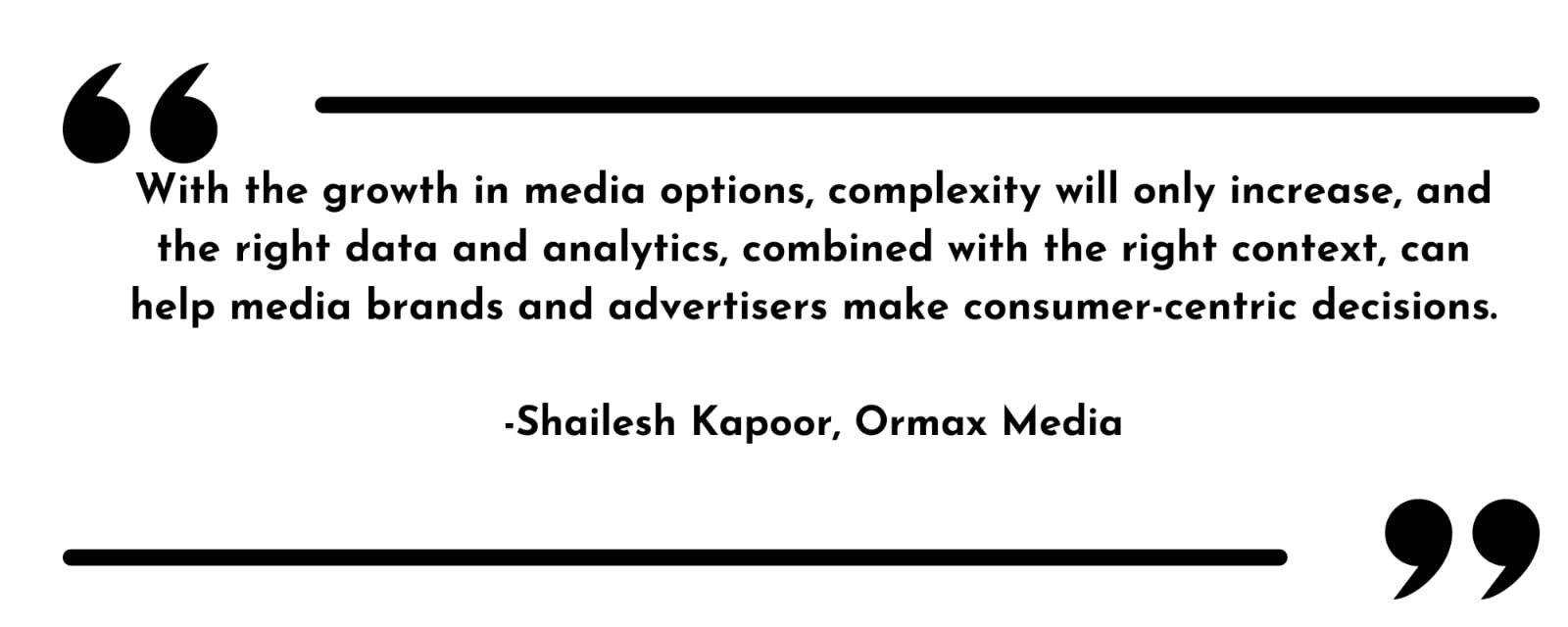
Are there any emerging or concerning trends you see in the future? How are you preparing yourself?
A definite trend that’s emerging is that the lines between different media are getting blurred. Today, Reels on Instagram are competing with long-format content like web series, for example. Yet, each medium and content type has its unique experience, making it relevant to its audience. A lot of our work post-pandemic is about understanding the nuances of media intersection. We do not buy into binary narratives, e.g., TV vs. OTT, OTT vs. theatres. Instead, our effort is to understand media intersection in the right context. For example, media choices of digital vs. TV for IPL will operate in a very different context compared to the audience’s decision to watch a new film in the theatre vs. OTT. With the growth in media options, complexity will only increase, and the right data and analytics, combined with the right context, can help media brands and advertisers make consumer-centric decisions.
Adobe Acquires Indian AI-Powered Platform Rephrase.ai
American software behemoth Adobe has finished acquiring Rephrase.ai, a Bengaluru-based startup well-known for its artificial intelligence-powered video production tool. Adobe’s goal with this move is to provide its clientele with AI-driven video content. This is not only Adobe’s first acquisition of a generative AI startup but also its first within the Indian startup ecosystem. Adobe’s in-house video editing platform, Creative Cloud, has incorporated Rephrase’s technology stack and AI-powered video capabilities in an effort to improve Adobe’s product offerings.
Exciting news! https://t.co/1vjINmfQE6 is getting acquired by a pioneering creative tech company, ushering us into the new era of Generative AI. 🚀 #GenAI #TechAcquisition #startups
— Shivam Mangla (@_shivammangla) November 22, 2023
First-ever Indian AI startup deal
Rephrase.ai is a platform that simplifies complex text-to-video conversion processes and empowers users to create videos of professional quality. It is expected that the acquisition will greatly increase Adobe’s ability to provide its customers with artificial intelligence-powered video content tools. With its state-of-the-art generative AI technology, the platform creates highly customized, polished videos for companies all over the world. Furthermore, it facilitates marketing teams and aids influencers and video producers in creating digital personas. They have already created award-winning campaigns in collaboration with a large number of companies and organizations.
Read More: Advertisers Embrace Programmatic Advertising As Cookies Decline
What about Rephrase.ai’s employees?
The majority of Rephrase’s staff will be integrated into Adobe as part of the acquisition. Regarding the ultimate deal size, however, not much information was given. Going forward, the software company will also work closely with the founders of Rephrase.ai. As of right now, Rephrase employs about 45 people. Its investors are reportedly expected to receive a full cash exit, and the founders will be compensated with cash and Adobe stock.
Why is this deal important for Adobe?
The reason Adobe’s acquisition of Rephrase.ai is significant is that it represents the US software giant’s first-ever contract in the generative AI and video tooling sectors. It reflects the increasing rivalry between major tech companies in the field of generative AI. Rephrase made history by becoming the first Indian startup to be acquired by Adobe, a business that has mostly closed deals outside of its native market, in the U.S. and Europe. It is anticipated that this deal will help Adobe expand its capacity to offer its clients artificial intelligence-powered video content tools more quickly.
Rephrase.ai origins
Ashray Malhotra, Nisheeth Lahoti from IIT Bombay, and Shivam Mangla, who graduated from IIT Roorkee, founded the company. To date, it has raised $13.9 million. Techstars, Silver Lake, Lightspeed India, and 8VC are some of the startup’s other backers of the startup.
Here’s what they said
Ashley Still, senior vice president and general manager, of Creative Cloud, said
The Rephrase.ai team’s expertise in generative AI video and audio technology and experience-building text-to-video generator tools will extend our generative video capabilities — and enable us to deliver more value to our customers faster – all within our industry-leading creative applications.
Read More: Omnicom Signs Generative AI Licensing Agreement with Getty Images
PubMatic Partners with PhonePe for Premium Mobile App Inventory and Audiences
PubMatic, an independent technology company that delivers the supply chain of the future for digital advertising, and PhonePe, the top mobile payments and financial services platform in India, announced their partnership. PubMatic’s programmatic buying partners will now have access to PhonePe’s premium mobile app inventory and audiences thanks to this collaboration. The agreement offers Indian media buyers a unique opportunity to reach PhonePe’s Indic-language-speaking audiences in a variety of metropolitan and non-metropolitan locations, as the industry searches for sustainable and unique solutions.
PhonePe – India’s largest UPI ecosystem
With more than 500 million registered users and a 47% market share in India’s instant payments ecosystem through the Unified Payments Interface (UPI), PhonePe is a major player in the country’s transition to a cashless economy. PhonePe has teamed up with PubMatic to fully utilize its digital advertising inventory as part of its mission to drive product innovation and enable more customers and businesses to go digital.
Enhanced Audience Experience
PhonePe will make use of PubMatic’s cutting-edge programmatic technology to provide viewers with an improved user experience and a privacy-compliant, fraud-free supply chain for advertisers. In addition to guaranteeing that viewers utilizing the PhonePe platform will see related and interesting advertising, the partnership gives advertisers programmatic access to users of the platform at scale.
Read More: PubMatic Integrates with FreeWheel, Expands CTV Ad Inventory
Here’s what they said
Amit Yadav, Country Manager, South Asia, at PubMatic said,
We’re excited to support PhonePe in diversifying and enhancing its digital monetisation by making its inventory and audiences available to a wider range of advertisers via programmatic technology. This partnership helps PhonePe to maintain a positive experience for the consumers and businesses who use its platform every day, while making these high-value audiences available to PubMatic’s advertiser partners.
Sravanthi Pasumarthi, Director of Strategy & Operations, PhonePe Ads added,
We are excited to partner with PubMatic and get a foothold into the programmatic advertising space. At PhonePe, we bring to the table the widest reach in India, deep user cohorts, and a whole suite of brand solutions that enable advertisers to uniquely leverage our strengths for their brand solutions at scale. We believe that this partnership will elevate the overall advertising experience on our platform for both our partners and users. The PubMatic-PhonePe collaboration underscores the growing significance of programmatic advertising within India’s evolving digital ecosystem. This strategic partnership empowers advertisers to connect with highly engaged audiences, creating meaningful interactions that drive tangible business outcomes.
Read More: PubMatic Announces Groundbreaking Data Collaboration with Experian
Virtual Product Placement: The Newest Upstart in TV. Find Out How!
Traditional media’s ad rates are dropping, and the companies that create the fiction that millions of people read every day must come up with a new business plan. Every major broadcaster has launched an on-demand service, contributing to the growing trend of subscription services. Thus, video streaming services with advertising are set to replace traditional networks. The way brands are integrated into digital content is being revolutionized by virtual product placement. With the help of AI-driven technology, marketers can effectively and versatilely engage with their target audience. It’s critical to watch where virtual product placement takes the advertising industry, as studies reveal that consumers prefer in-content advertising 7 times over traditional ad formats. But for many, it remains shrouded in mystery, so let’s explore some insights into the trend.
What is Virtual Product Placement?
Marketers are always looking for new and creative ways to promote their brands and products in the digital world of today. Virtual Product Placement (VPP) is one such technology that has become quite popular. Using AI technology, VPP dynamically inserts a brand into digital content, such as products, signage, or videos. It gives marketers an adaptable, flexible, and powerful tool for establishing a connection with their intended audience. Placements are added to content after it has been produced, allowing for the insertion of various brands based on the audience, channel, and timing of the piece.
Most importantly, VPPs don’t appear in a disruptive way; instead, they organically fit into selected content. With this innovative strategy, brands can easily incorporate their goods into digital content, opening up new avenues for successful advertising. Because virtual product placement has the potential to monetize both new and archived content, it is causing quite a stir in the industry. Because of its adaptability, it can be used for a wide range of content formats, such as music, influencer content, SVOD/AVOD, television, and streaming services.
Inserting brands in post-production in VPP
Digital brand integration into videos has a number of clear benefits. It can be far more flexible and less expensive than handling each product by hand. At a time when viewers are adamantly rejecting commercials and other disruptions to their video binges, it might offer an extra source of income. TV branding opportunities could eventually resemble web advertising with real-time bidding for placements and precise targeting as technology advances.
Traditional product placement
For many years, there has been traditional product placement. Think about the numerous appearances of Aston Martin in classic James Bond movies. As background elements, narrative devices, or even billboard and magazine advertisements, brands are increasingly appearing on TV and film sets. Spending on product placement appears to be increasing yearly, and this strategy is still very popular. In actuality, the anticipated growth in 2022 is 14% higher than the previous year. TV continues to be the preferred medium for this kind of advertising despite the expansion of digital media; in 2021, about $2 billion will be invested in TV.
Challenges of traditional product placement
Traditional product placement presents a number of difficulties, such as being difficult to implement, hard to agree upon, and permanent once it’s been filmed. Production of content requires several months before it is aired or published, so traditional product placement is more of a long-term arrangement than a flexible one.
Read More: Developers Can Publish Instant Games Directly To Facebook At Any Development Stage
Origin of VPP
Virtual product placement allows for the smooth integration of goods into previously created content. This gives advertisers quick, adaptable, and scalable access to already-produced content. Additionally, this gives content producers the freedom to explore new revenue opportunities without having to sacrifice their production schedules or make advance commitments to brand partnerships. Rather, they can concentrate on telling t
heir story and using virtual product placement to include subtle, unobtrusive ads.
Benefits of Virtual Product Placement
Viewer Attention, Flexibility, and Simplicity
A further factor in the significance of virtual product placement in today’s media environment is the evolution of viewer attitudes and behaviors. Creating a positive user experience is the main goal. Viewers of traditional TV are dwindling. Naturally, viewers gravitate toward media platforms that provide more user choice and freedom along with minimal or nonexistent intrusive advertising. While only 12% of consumers said they enjoyed traditional TV advertisements, a remarkable 79% of consumers responded favorably to VPP, according to Kantar research.
Virtual product placement is easier to use and more adaptable than traditional methods. Brands may quickly modify their placements to correspond to particular interests, demographics, and content themes. Because of its adaptability, targeted advertising can effectively reach its target market. Furthermore, virtual product placements fit in perfectly with the selected content, enhancing the viewer’s experience without interfering.
Seizing new advertising opportunities
Virtual product placement is preferred by viewers. In-content advertisements are also shown to be more memorable than traditional TV commercials. Through virtual product placement, advertisers can increase their audience reach and level of engagement. Products can be strategically positioned within well-liked digital content to give brands greater exposure and association with well-known figures or popular shows. With this strategy, brands can improve their own brand awareness and image by taking advantage of the popularity and audience loyalty that digital content already enjoys. When compared to other advertising formats, virtual product placement shows impressive results in terms of ad awareness, brand awareness, favorability, and consideration, according to research from Kantar.
Virtual product placement creates a real impact
On the other hand, virtual product placement reaches viewers when they are deeply engaged with the content they have selected, whereas many people ignore or skip ad breaks. Virtual product placement has the power to connect products and brands with slow-moving characters or compelling narratives that resonate strongly with their target market, influencing their purchasing decisions. There is no danger of virtual product placement occurring too frequently because they are relevant to the media content and do not interfere with the story. For example, it doesn’t feel excessive to feature a cereal brand in every kitchen scene or a makeup brand in every bedroom shot. Viewers can thus see repeated product shots and maintain a positive brand sentiment.
Read More: Meta Announces Five New Lead Generation, AI-Powered Tools for FB, IG
Driving Brand Integration and Consumer Engagement
VPP’s smooth integration strengthens the bonds between consumers and brands. Marketers can create an immersive experience that improves brand recall and recognition by matching products with pertinent content. Digital content that subtly incorporates products fosters a natural association. It increases the likelihood that viewers will interact with and remember the brand. This type of advertising uses visual cues and storytelling to capture viewers and encourage meaningful brand interactions.
Measuring success and ROI
Measuring the effectiveness and return on investment (ROI) of VPP is critical, just like with any marketing campaign. Marketers are able to assess the effectiveness of virtual product placements in terms of reach, engagement, and conversion metrics. They can utilize sophisticated analytics and tracking tools. The utilization of data-driven methodology facilitates the ongoing enhancement and improvement of virtual product placement tactics, guaranteeing optimal efficacy and return on investment.
Drawbacks to virtual product placement
Integration and authenticity
It is imperative to ensure that virtual products are seamlessly integrated into the content while maintaining authenticity. The audience’s opinion may be negatively impacted if the placement appears forced or out of place. Striking a balance between advertising goals and upholding authenticity can be facilitated by collaboration between content producers and advertisers.
Evolving technology and trends
Trends in media consumption and quickly advancing technology have an impact on virtual product placement. Keeping abreast of new platforms, technologies, and formats is essential to making the most of virtual product placement. Furthermore, it guarantees long-term success by routinely evaluating and modifying strategies to conform to changing trends.
Amazon’s Virtual Product Placement
Amazon tested a novel approach to allow brands to run advertisements on its original programming. Reacher, Jack Ryan from Tom Clancy, Leverage: Redemption, and other television series were among the first to take part in Amazon’s Virtual Product Placement beta program. The company’s new CGI-powered product placement technology produced promising results. In the Amazon series Bosch, the bag of M&Ms was digitally added to a bowl on a table.
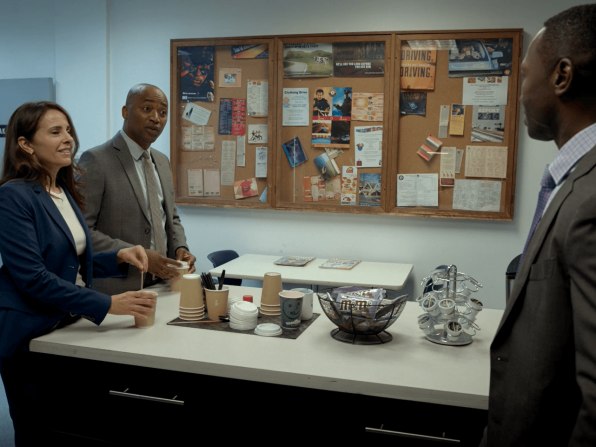
Image credit- Fast Company
Peacock TV
A digitally inserted advertising strategy was also announced by Peacock. The purpose of the new in-scene advertisements is to increase commercial opportunities by seamlessly integrating messaging and/or products with content during post-production to place ads during customer-relevant scenes.
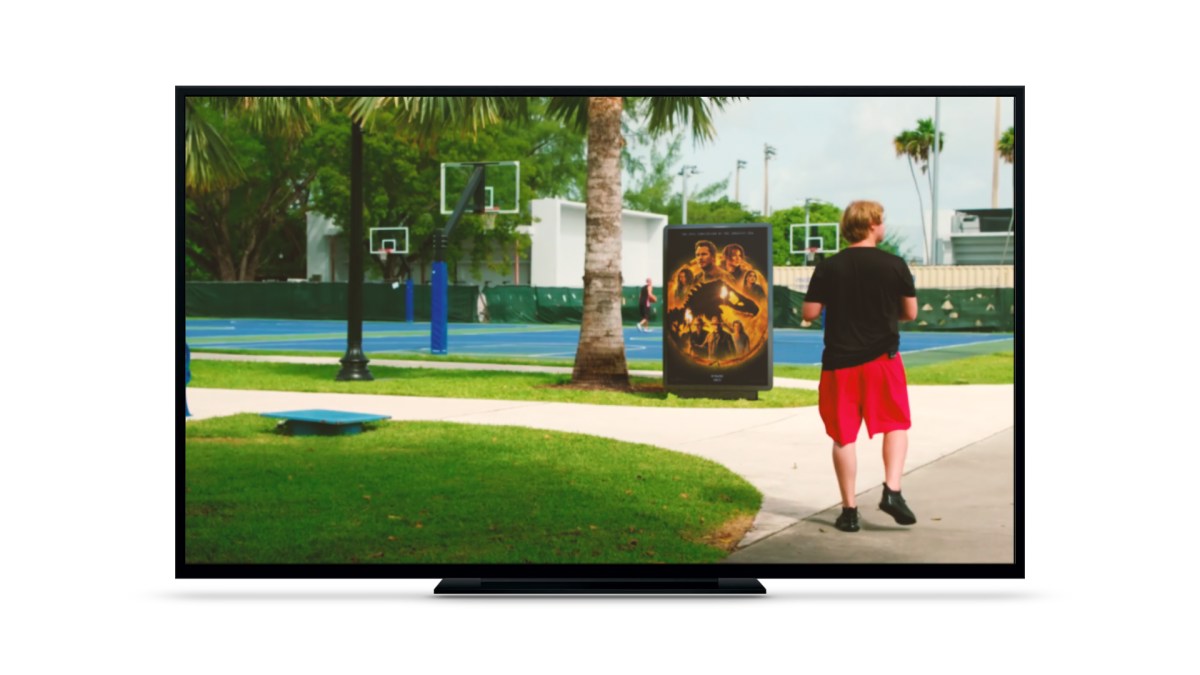
Image credit- TechCrunch
Final words
VPP promotes consumer engagement, improves brand integration, and creates new avenues for advertising. Virtual product placement will definitely become more and more important in marketing as the digital landscape develops. Furthermore, it appears that the technological foundation of VPP is already remarkably strong. This is based on the swift rise of a few highly inventive experts. Without a doubt, content owners will be searching for new ways to generate revenue. It is possibly more so than at any other point since the start of digitalization, in a fragmented media landscape where generational shifts present a particularly big challenge.
Read More: Indian Gaming Firms are Eyeing the Brazilian Market. Explore Why!
Roku and Unity Announce Collaboration to Aid Mobile App Marketers
Roku, the top streaming service in the US and the world’s top platform for producing and managing real-time 3D (RT3D) content, and Unity have announced a strategic product and commercial partnership. This partnership will make it easier for mobile app marketers to extend their app install campaigns to TV streaming inventory. Through this partnership, mobile app marketers will have the only seamless TV streaming campaign execution experience possible by combining Unity’s user acquisition technology and experience with Roku’s premium inventory.
Roku – Unity solution for app marketers
The solution, which is currently in beta testing, links Unity’s Luna app marketing platform to Roku’s premium TV streaming inventory by fusing Unity’s campaign management and optimization technology with Roku’s Action Ads. With a smooth transition from ad view to download, Roku’s Action Ads offer advertisers the advantages of click-through measurement along with an easy-to-use discovery flow for viewers. They can therefore evaluate the effectiveness of their streaming TV campaigns from the point of initial ad exposure to the download of mobile apps.
TV streaming and Roku Action Ads
The first-to-market collaboration coincides with the expansion of TV streaming advertising. GroupM projects that global TV streaming ad revenue will reach $25.9 billion in 2023, an increase of 13.2%. Given that, at least 82 of the top 100 games use Unity to expand their user bases and that Roku has nearly half of all broadband homes in the United States, these two platforms are ideally positioned to assist app marketers in utilizing more screens and devices to engage potential users and spur incremental growth. Through this partnership, marketers can now take advantage of Roku Action Ads for a seamless experience in addition to closing the measurement loop for improved optimization.
Read More: Roku-Shopify Revolutionize TV Ads By Enabling On-Screen Purchases
App marketers and TV streaming campaigns
With the Roku remote, users can start the game download on any mobile device and go back to watching TV shows without any hassles. Additionally, app marketers can now track every aspect of their TV streaming campaigns, from the first TV ad exposure to the final mobile app download, which opens up new, more affordable growth strategies. When Roku’s scaled inventory is combined with Luna’s campaign management technology, app marketers hoping to boost performance on home TVs will have never-before-seen opportunities.
After logging in from Unity, app marketers will go to Luna and choose Roku from a list of marketing channels. This makes it simple for marketers of mobile apps to purchase cross-channel advertising on a single platform. After the beta test, Luna will collaborate with a select group of partners to expand to Roku.
Here’s what they said
Miles Fisher, Senior Director, Head of Emerging and Programmatic Sales at Roku said,
Mobile app marketers seek to maximize their budgets and ad opportunities. TV streaming has become the right performance channel to enable growth and provide channel diversity in a highly competitive market. Roku’s scale, tech, and direct connection with the viewer are uniquely positioned to make the largest screen in the home work harder for mobile performance marketers on Unity.
Omer Kaplan, SVP of Revenue and Operations for Unity Grow added,
The driving force behind this partnership is to turn CTV into a high-scale performance channel for apps and games. Savvy app marketers today know that they have to harness every available channel to drive truly incremental and cost-efficient growth, and CTV represents a huge and largely untapped opportunity. By coupling that scaled inventory with Luna from Unity’s robust campaign management and optimization technology, this partnership unlocks unique value for app marketers who are looking to drive performance on home TVs. We believe that there is no better combination of partners more suited to making CTV a successful performance marketing channel to add to app advertisers’ UA toolkit.
Read More: Roku and Spotify Collaborate to Introduce Video Ads To Roku App
How Ad Ops is Revolutionizing the Indian Advertising Landscape
Welcome to the world of ad operations, where advertising and optimization meet chaos and order, respectively. Ad operations are the foundation of the monetization strategy in the realm of digital marketing. Its function is basic. Make sure the publishers serve the right advertising at the right times. The management and optimization of digital advertising initiatives fall under this category. Ad operations have changed significantly over time. According to a 2022 forecast, revenue for ad media owners will increase by around 6% globally to a record-breaking $865 billion in 2023. As the decade progresses, it is predicted that the annual sum will rise even higher, hitting one trillion dollars by 2026.
Ad Ops is a crucial part of any publisher’s system. It is in charge of overseeing internet sales of digital advertisements and is the most profitable cash cow. In essence, it is a crucial element of ad tech. But what precisely are Ad Ops?
An Introduction to Ad Operations
Ad Ops, often referred to as Digital Ad Operations, is the term used to describe the systems and procedures that enable the management and delivery of digital advertisements. The term refers to any method used by a marketing team to manage, carry out, or improve advertising campaigns. Although there are more than a billion websites, it would be extremely expensive for advertisers to have their adverts seen by everyone around the globe. Instead, companies can attempt to target their ads at individuals who most closely match their existing customers using digital advertising markets. Here’s where ad ops come in.
They are in charge of placing the ads based on the likely audience, time zones, places, and regions. It will generate income in return through advertising initiatives. Ad operations technology links advertisers looking to buy ad space with websites that offer ad space for sale. Despite the fact that the majority of digital ad spaces are sold programmatically and without human intervention, ad operations play a significant role in setting up and overseeing these procedures.
Key Components
Ad operations is the fusion of many technological methods, tools, and stakeholders. The main categories in which the key elements of ad operations fall are:
- Ad trafficking
- Creating and managing ads
- Delivering and targeting ads
Ad Trafficking
Ad Trafficking means setting up and implementing an advertisement campaign so it runs in line with its goals.
- Scheduling – One of the crucial tasks for Ad Ops is to correctly decide and operate pre-fixed schedules for launching and running ads considering the timing of an ad is a key.
- Optimization – One of the most important benefits of digital advertising is the ability to get precise, real-time data on consumer behavior and advertising engagement.
Creating and Managing Ads
Involves choosing ad formats, developing ads, and managing marketing campaigns. To guarantee that ads are properly created and handled, ad ops specialists collaborate closely with advertisers and publishers.
Delivering and targeting ads
Professionals in ad operations employ a variety of targeting strategies, including behavioral and demographic targeting.
- Ad Performance Analytics – To optimize ad campaigns and boost performance, Ad Ops specialists track and analyze data on ad performance.
- Privacy and Ad Compliance – Ad Ops experts must make sure that ads are delivered in a way that respects user privacy and adheres to applicable laws.’
Read More: 10 Game-Changing AI Tools for Digital Marketing in 2023
Advertising Landscape in India
With cutting-edge digital technology becoming more popular than ever in the market, the Indian advertising sector is set to reach new heights. Due to the pandemic, the advertising industry has been struggling to survive the past two years. However, indications show that the Indian advertising sector has been progressively recovering. The market size was INR 743 billion in 2022, and by 2028, it is anticipated to be INR 1,412.5 billion. It has a growth rate of 11%. The Indian advertising industry is expanding at an unprecedented rate, and digital advertising is flourishing. In an effort to reach the target demographic, brands and advertisers are using agile strategies to use digital advertising.
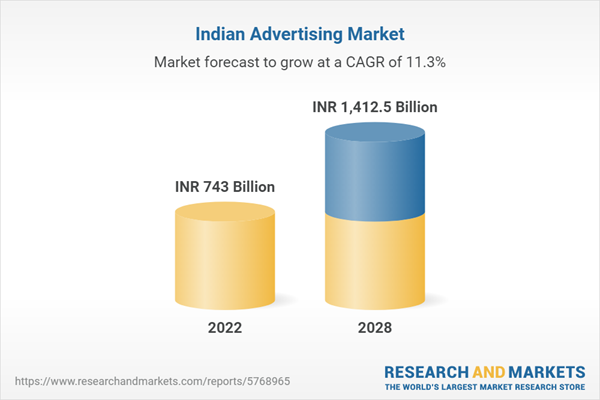
Image credit- Research and Markets
With every second that goes by, the Indian advertising scene continues to grow. Advertising experts adopted a 360-degree strategy as technology improved to include existing and upcoming digital media. Advertising in India, a now-vast industry, is set on being the second-fastest growing advertising market in Asia. It is now more data-driven, with thorough client journeys, mass-customized messages, and attractive deals.
Benefits and Drawbacks of the Ad Ops in the Advertising Landscape
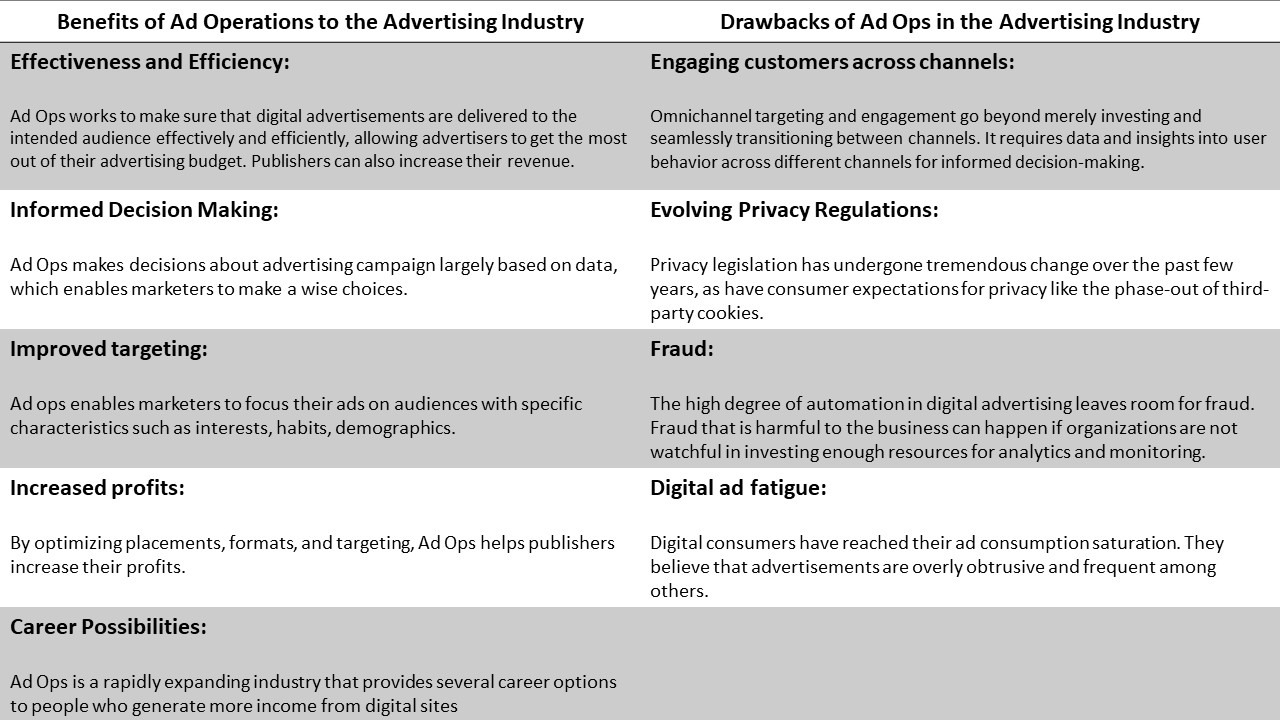
Read More: Cracking the CRED Code: A Deep Dive into its Advertising Mastery
Case Study for Brands Who Leveraged Ad Ops
In India, Zomato is a well-known B2P app for food delivery. Zomato’s excellent marketing campaign has been one of the primary causes of this enormous increase in revenue. It has made it a priority to connect with its target market consistently. Zomato grew when internet marketing became mainstream in India. For instance, appealing ad words on billboards and SMS messages to the target population showed a firm belief in their advertising skills.
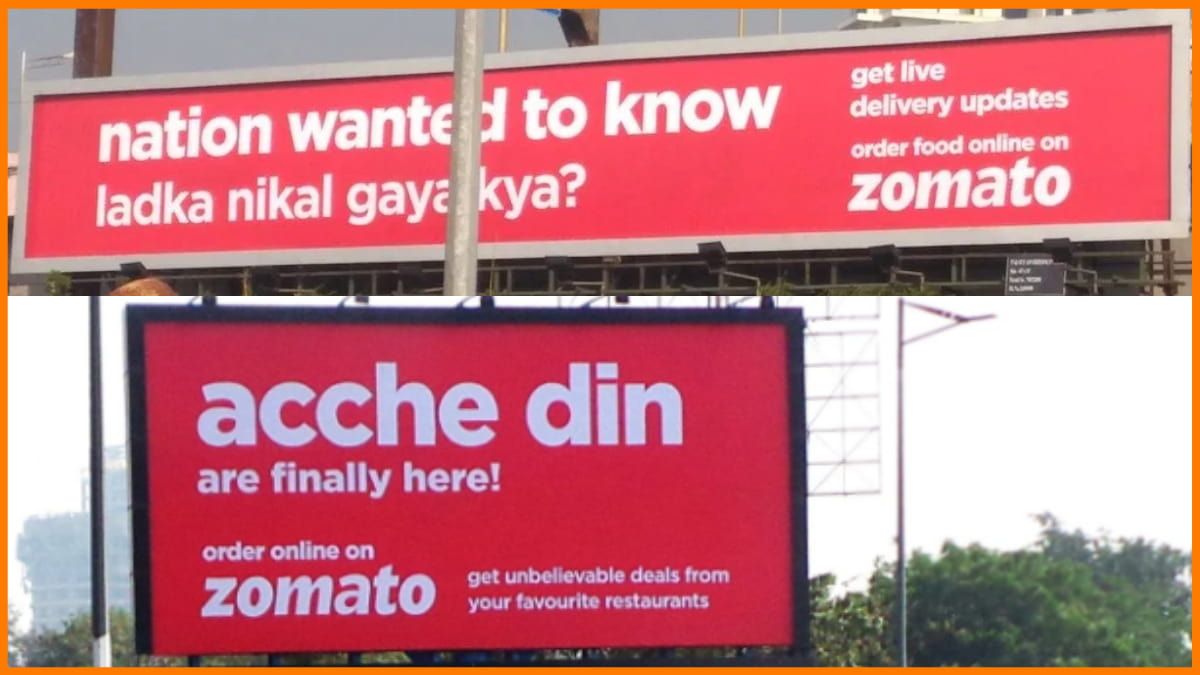
Image credit- Startup Talky
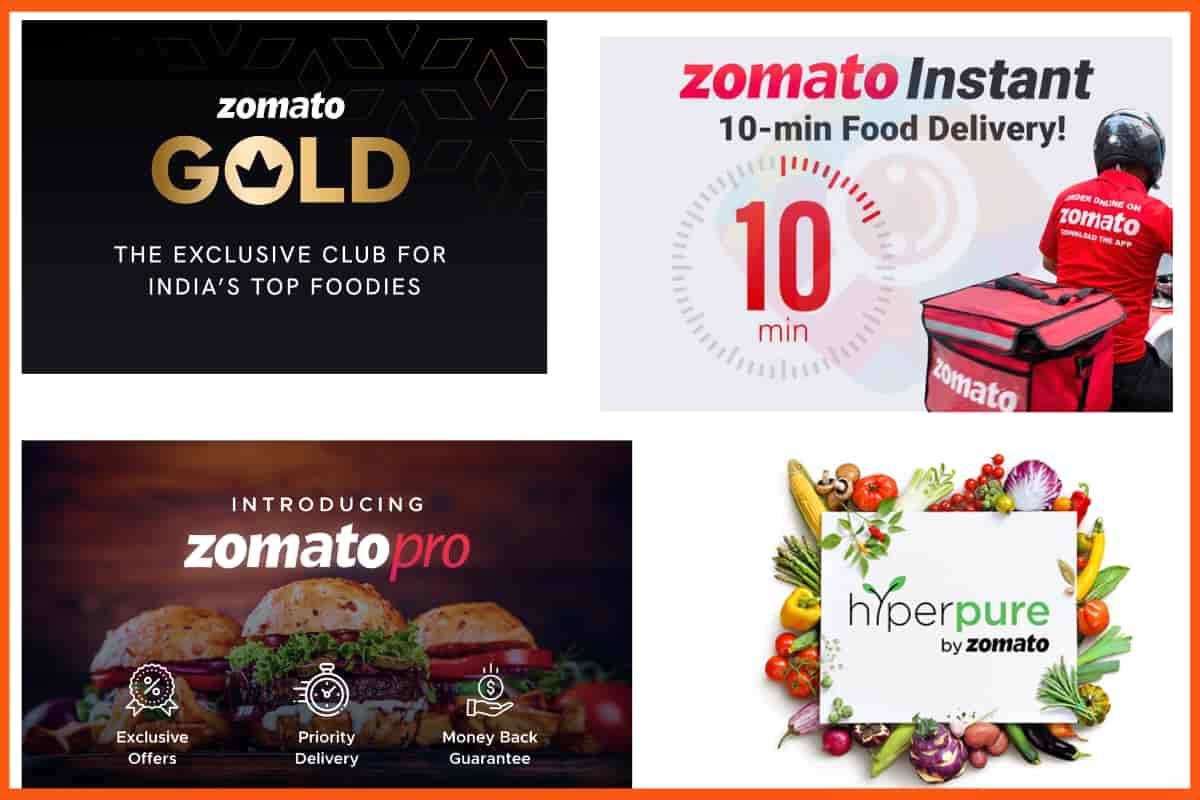
Image credit- Startup Talky
Here are some ways that Zomato’s marketing and ad operations techniques contributed to the app’s success.
- Wide-range and Powerful Outreach
- Email Tactics
- Using Social Media
- SEO Efficiency
Wide-range and Powerful Outreach
Zomato used a variety of outreach strategies in its marketing initiatives. It involves paid advertisements, email and SMS lists, and social media strategy. They studied consumer traits, ordering trends, and peak ordering hours to tailor ads for Zomato’s user base.
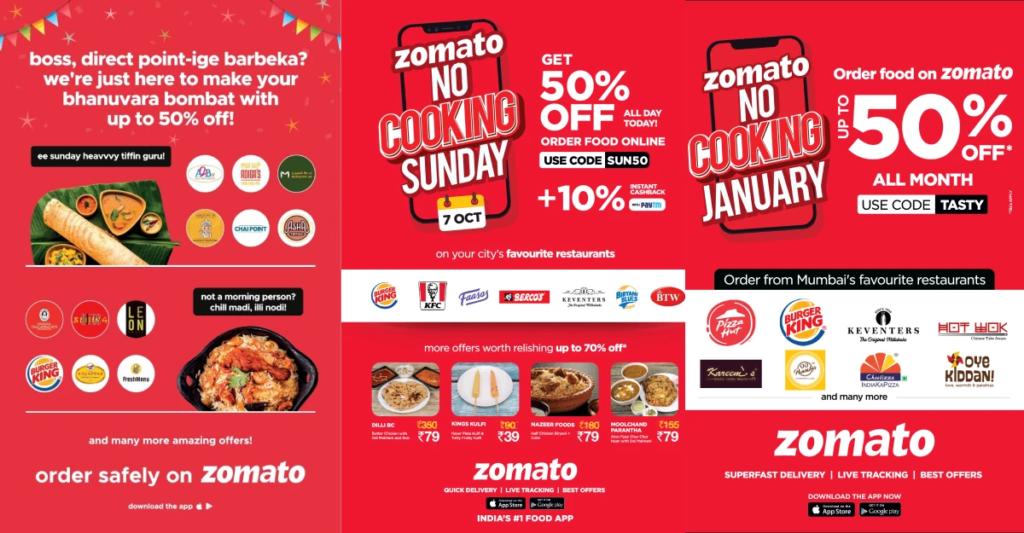
Image credit- The Business Rule
Email Tactics
Zomato targeted a potential niche by curating its emails to implement marketing strategies centered on the binge-watching culture that goes hand in hand with food.
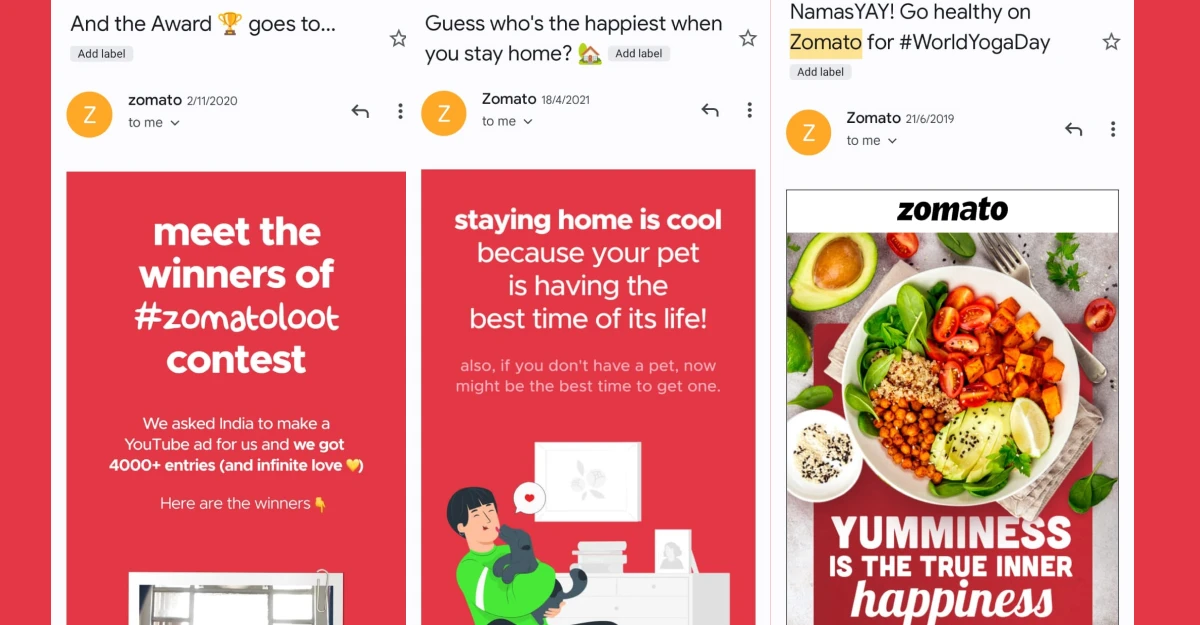
Image credit-The Business Rule
Using Social Media
Zomato depicts itself on social media with postings that are engaging on an emotional level. They interact in regional languages and make humorous memes to participate in meme
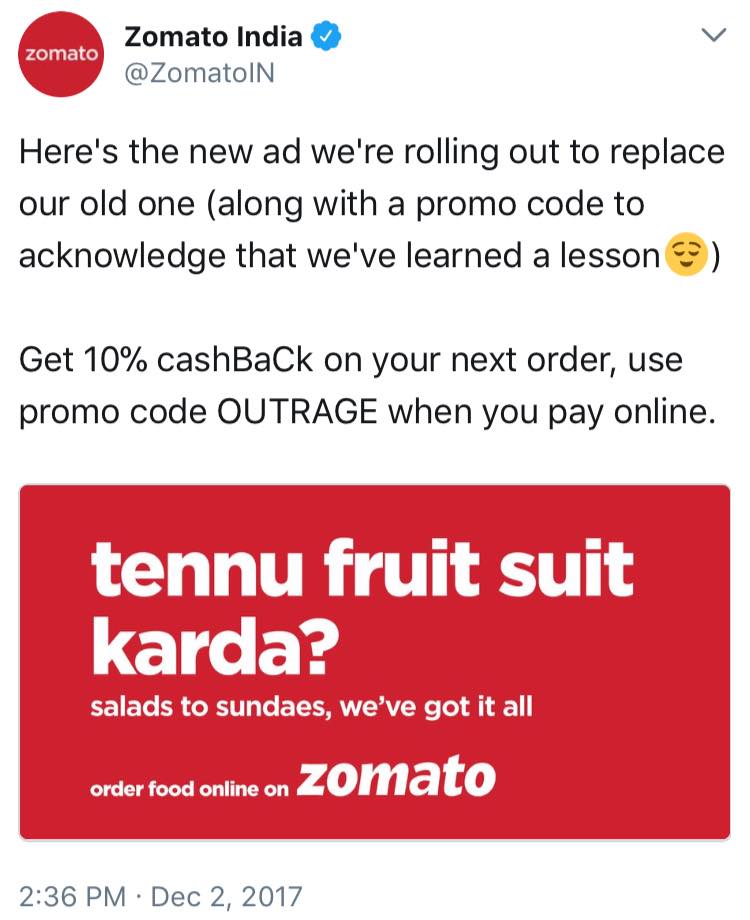
Image credit- Social Samosa via Facebook
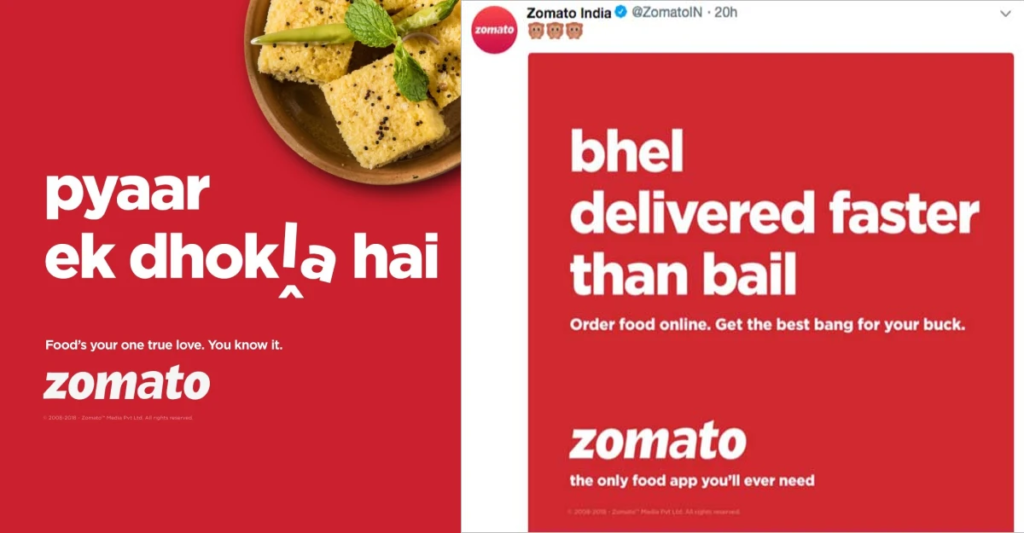
Image credit- The Business Rule
SEO Efficiency
Zomato has produced extremely keyword-dense material that has drawn more than 67 lakh internet visitors.
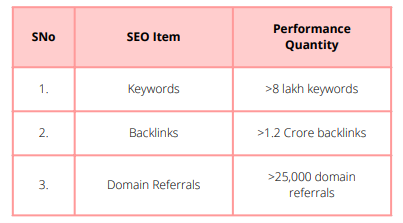
Image credit- iim skills
Zomato has a lot of influence because of its unique strategy of putting novel concepts into action on various fronts. It has always been a top priority for them to pay heed to customer comments and answer as soon as feasible.
Read More: An Innovative Triumph: Burger King x Stevenage FC Case Study
Myntra, a top-tier Indian online apparel retailer, boasts a remarkable “rags-to-riches” journey. Renowned for quality products and stellar customer service, its marketing plan revolves around key pillars for success.
- Content Marketing
- Social Media Marketing
- SEO Efficiency
- Paid Advertising
Content Marketing
Myntra has a popular blog that discusses a wide range of fashion, lifestyle, and trend-related topics. This makes the site one of the most well-liked fashion blogs in India. It leverages content marketing to establish connections with other brands and influencers.
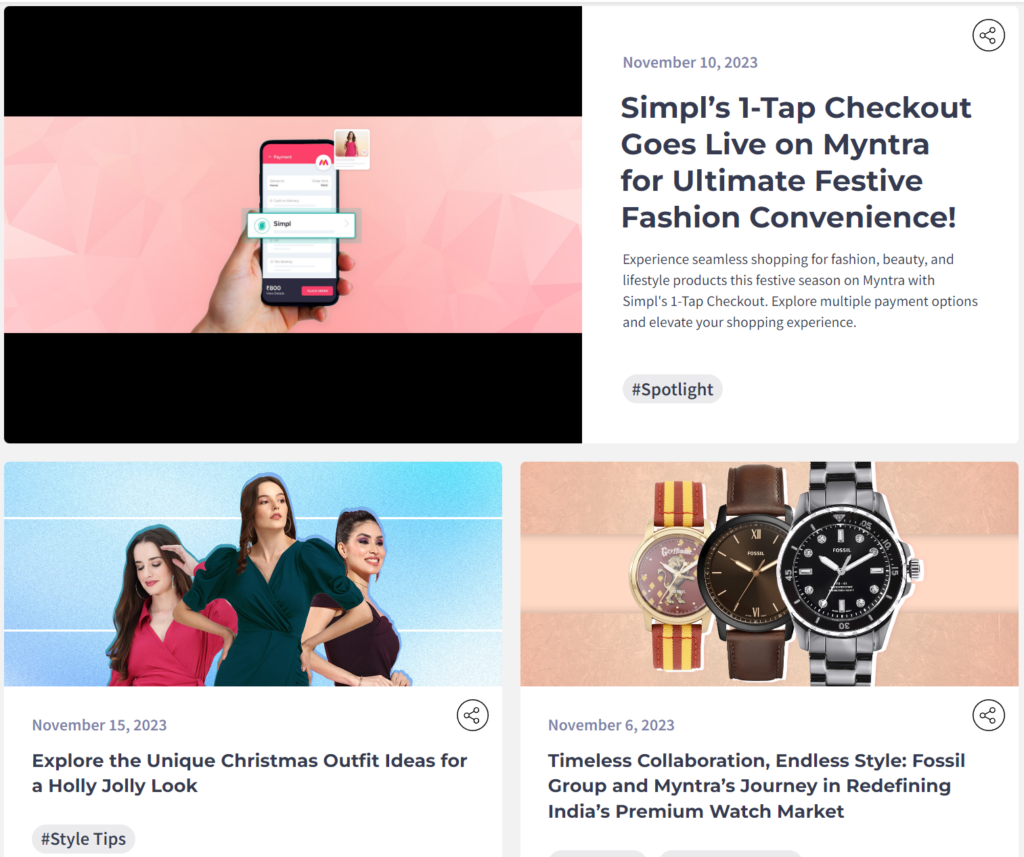
Image credit- Myntra
Social media marketing
Myntra keeps a strong social media presence to ensure its target audience is always aware of the latest content. It routinely undertakes social media campaigns that support the development of the brand’s feeling of community. Additionally, it assists in providing a supply of user-generated material for advertising needs.

Image credit- Indian Retailer
SEO Efficiency
Myntra makes use of SEO to make sure that its website ranks as highly as possible for the right keywords. To do this, they incorporate relevant keywords and phrases into the website text.
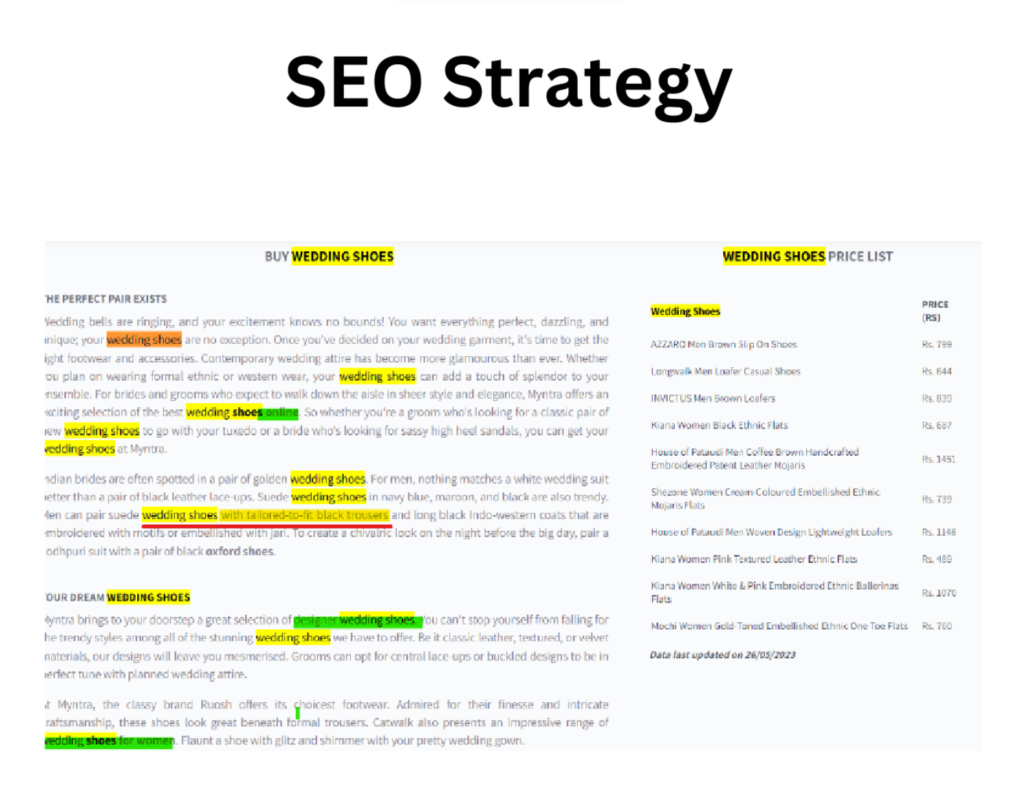
Image credit- Madhu Sudanan via LinkedIn
Paid Advertising
Myntra promotes its website and goods through paid advertising. They employ a variety of strategies, such as display, retargeting, and pay-per-click (PPC) advertising. These techniques enable Myntra to efficiently promote its brand to a large audience.
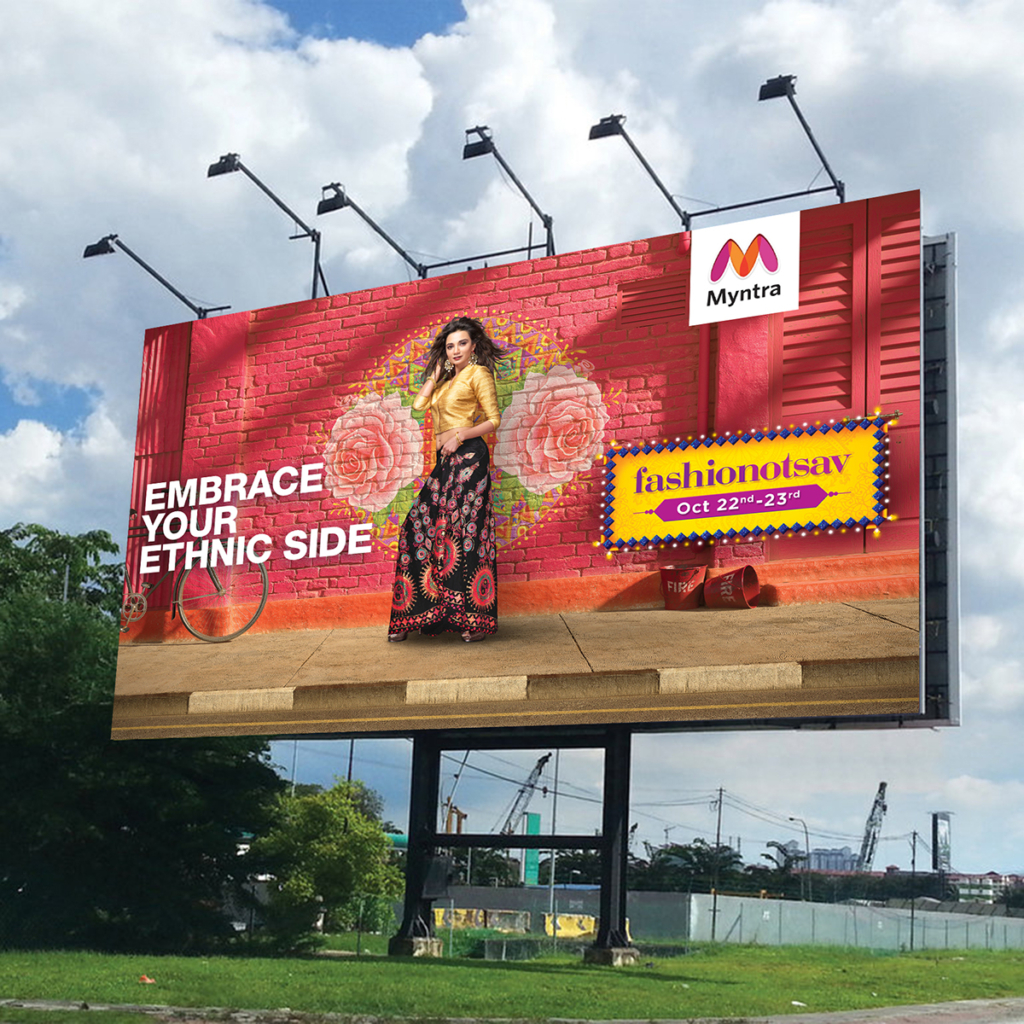
Image credit- Afaqs
Both businesses saw enormous success as a result of their marketing plans and ad operations. These businesses would still be unknown if they had not reached their target audiences at the correct time and through the right channels. Zomato and Myntra needed to avoid bombarding customers with frequent and unnecessary ads to provide an excellent customer experience. They were aware of the demographics and preferences of their audience. Both businesses achieved the ideal mix between client satisfaction and revenue generation. The organizations were able to make informed decisions due to their comprehensive insights.
The Future of Ad Ops in India
Ad operations teams will need to embrace newer platforms and follow the lead of younger demographics as the Indian advertising market continues to grow. Digital-out-of-home (DOOH) advertising tools are among the new technologies that enable marketers to reach audiences in public spaces with customized content. Moreover, it’s clear that ad operations are no longer only a tactical role. Ad operations teams are already becoming more strategic, leveraging technology to solve business challenges and playing a key role in revenue growth because of their close relationship to revenue. However since digital media is always changing, ad operations professionals should expect to face a number of new difficulties in the coming years.
- The volume of campaigns will keep growing at an exponential rate.
- The range of available ad formats will increase.
- Utilizing first-party data effectively will be essential—even more so than it is now.
- Changes in policy will be implemented on a worldwide, regional, and national scale.
- There will be more pressure on companies to maintain high margins while increasing revenue.
- Publishers will see that ad ops teams with a tech focus can directly affect revenue.
- Ad ops teams’ increased awareness of revenue workflows and data will help them move closer to the strategic side of the business.
Another important factor in digital marketing will be the development of technology. Fortunately, generative AI has made it simpler for ad operations teams to create more content in greater quantities intended for multiple channels. This technology can be used by ad operations specialists to test ad tech platforms, generate and evaluate audience segments, and produce content in a variety of formats. Ad operations teams can concentrate more on gathering information and using data-driven insights to guide marketing and revenue decisions as generative AI enhances automation.
Final Words
Ad Ops is increasingly playing a crucial role in the Indian advertising sector by enhancing efficiency, targeting, and campaign effectiveness. In this industry, automation and personalization must be carefully balanced. Ad operations will be essential in ensuring ad viewability and brand safety as the advertising landscape changes. Cheers to the growth of ad operations and their bright future in the Indian advertising industry.
Read More: Cricket’s Advertising Blitz: Boundaries Beyond the Game!

